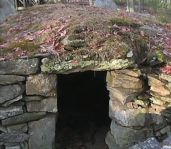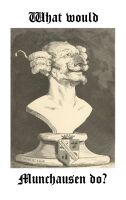|
by Robert Charroux  Revises the Americas' place in civilization's development
Revises the Americas' place in civilization's development
For a very long time Enlightenment naturalists in Europe held that the Americas produced only inferior species and individuals; they believed that the climate was detrimental to organisms, and that not only were the lower animals inferior, but that the Europeans and their descendants, as well as the native peoples, were of a lower order than those living in Europe. New World thinkers, in turn, refuted as best they could this idea, and so the Dispute of the Americas raged on for several centuries. This rather infantile attack on the New World has resulted in several ideas which are, if not patently untrue, at least not supported by evidence. Among these ideas is the belief that Native American cultures were primitive, barbaric, and rude. Another was that humanity could not have originated in the New World. Both of these ideas are challenged by the information in this book. It is a storehouse of information on the wonderful events and archaeological sites found in the Americas and nowhere else. The New World will show to the Old that pre-Columbian civilizations were not inferior, that they practiced sciences at the same level as the Europeans: they were advanced practitioners of engineering, of medicine, of telemetry, performing feats that are considered impossible for Americans and Europeans of pre-Columbian peoples alike by European historiographers. Robert Charroux, in his book Mysteries of the Andes, has given us the information necessary to subvert the dominant paradigms. One of the reasons that these advances came early to the Americans, Charroux suggests, is that humanity evolved in the New World, and therefore early on discovered knowledge which Europeans would discover independently only later. This idea, if true, would require a vast rearrangement of the human sciences, which are notably Eurocentric--wherever humanity may have evolved, the pinnacle of human thought is certainly considered by European thinkers to be European--with the result that the New World would be considered superior to the Old. The New World in this scheme becomes the womb and cradle of humanity and civilization. It would also require that facts long held by biologists be declared invalid. Despite European efforts to cover up this information, there is considerable evidence for both of these points. Chief among this evidence are the Ica Stones, a collection of artifacts which demonstrate that the inhabitants of Peru practiced open heart surgery; that they watched the skies through telescopes; that prehistoric creatures such the Tyrannosaurus Rex, the Archaeopteryx, the Brontosaurus, and the Australopithecus all co-existed with our species. Dr. Cabrera, curator of the museum where these stones are kept, will in future generations be venerated as a scientist as great as Cuvier, Newton, and Humboldt. These stones also show that extraterrestrials visited our planet in our prehistory, as do the Nazca lines. They may have helped us evolve from apelike beings into the species as it appears today. In short, these artifacts reveal a brave new world in the Americas of which orthodox European science has long kept us ignorant. It is brave of the author--himself a European--to go up against the establishment and reveal this new information and evidence to the world at last. These ideas are supported by many photographs, including 34 photographs of those stones which provide proof that humanity and dinosaurs were contemporaries and that early Americans had advanced technology. I had heard of these stones, but had never had an opportunity to see photographs of them, so I was quite thrilled when I finally came across a copy of this book. The book does have several flaws: it lacks an index of any sort, it makes constant references to a French archeological dig named Glozel without explaining what it is (it is a site in France which demands that our ideas about the time and place of the invention and writing be revised) and the author apparently could not decide between the inductive or deductive methods, or even if he could strike his target best with Enlightenment methods (thus stinging the scorpion with its own barb) or by appealing to mysticism and revelation. It also contains very strange phrases which do nothing to give the text an air of authority: how can one read the subchapter title "Santa Claus or the Werewolf of the Cosmos" without doubting the author's sincerity? Still, the information provided here should provide the anomalist and the open-minded archeologist with sources for future research projects for years to come. Future historiographers and scientists will look upon Charroux as another Columbus, disclosing the New World and its wonders yet again to the Old. |

